Let’s discuss various materials commonly used for Compound wall Design construction, such as brick, concrete, wood, and stone, along with their pros and cons: also we see that How to Choosing the Perfect Compound Wall: Materials, Designs, and Heights for Your Property..
1000+ Compound Wall & Boundary Wall Design ideas 💡
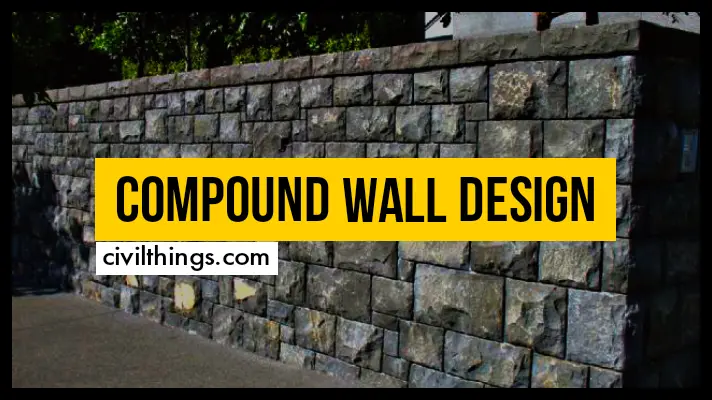
Table of Contents
Best 12+ Compound Wall Design: Materials & Boundary Wall Ideas 💡
Brick walls are sturdy and provide a classic look. Learn More
Stone walls offer natural beauty and durability. Learn More
Concrete walls are modern and customizable. Learn More
Metal fences provide security and style. Learn More
Wooden walls add a rustic and warm touch. Learn More
Glass walls are sleek and modern. Learn More
Gabion walls are eco-friendly and versatile. Learn More
Plaster walls offer smooth and elegant finishes. Learn More
Vinyl fences are low-maintenance and durable. Learn More
Bamboo walls are sustainable and attractive. Learn More
Hedge walls offer natural beauty and privacy. Learn More
Wrought iron fences are elegant and strong. Learn More
Combining materials for unique and stylish walls. Learn More
1. Brick Compound Wall Design
Advantage:
A) Aesthetic Appeal: Bricks provide a classic and timeless look, suitable for various architectural styles.
B) Durability: Brick walls are durable and can withstand weather conditions well.
C) Low Maintenance: They require minimal maintenance, typically needing occasional cleaning and repointing.
Disadvantage:
A) Cost: High-quality bricks can be expensive, and skilled labor is needed for proper installation.
B) Limited Height: Brick walls may have height limitations due to their weight, making them less suitable for very tall compound walls.
C) Time-Consuming: Bricklaying is a time-consuming process, which can affect construction timelines.
2. Concrete Compound Wall Design
Advantage:
A) Strength: Concrete walls are strong and provide excellent security and privacy.
B) Versatility: They can be designed in various shapes and sizes to fit your needs.
C) Low Maintenance: Concrete is relatively low-maintenance and can last for many years.
Disadvantage
A) Aesthetics: Plain concrete walls may lack the aesthetic appeal of other materials but can be painted or textured.
B) Cracking: Concrete may develop cracks over time, especially in areas with temperature fluctuations.
C) Environmental Concerns: Concrete production can have a significant carbon footprint.
Also Read – Explore Different Types of Wall Textures for Your Home Design
3. Wood Compound Wall Design
Advantage:
A) Natural Beauty: Wood offers a warm and natural appearance, enhancing the overall aesthetics of your property.
B) Adaptability: Wood can be customized to various styles and designs.
C) Environmental Benefits: Sustainably sourced wood can be an eco-friendly option.
Disadvantage :
A) Maintenance: Wood requires regular maintenance, including sealing, staining, or painting, to protect it from rot and pests.
B) Durability: Wood is susceptible to decay and termite damage, which can reduce its lifespan.
C) Cost: High-quality wood can be expensive, and installation may require skilled labor.
4. Stone Compound Wall Design
Advantage:
A) Elegance: Natural stone walls exude elegance and charm, making them suitable for upscale properties.
B) Durability: Stone is highly durable and can last for generations with minimal maintenance.
C) Low Maintenance: Stone walls typically require little maintenance beyond occasional cleaning.
Disadvantage:
A) Cost: Natural stone can be one of the most expensive options due to the cost of materials and labor.
B) Heavy:Stone walls are heavy and require strong foundations, potentially increasing construction costs.
C) Installation Complexity: Properly installing stone walls can be complex and time-consuming.
When choosing the right material for your compound wall, consider your budget, aesthetic preferences, maintenance capabilities, and the specific needs of your property. Often, a combination of materials, such as a brick or stone facade on a concrete core, can offer a balance between aesthetics and durability. Consulting with a professional architect or contractor can also provide valuable guidance in selecting the most suitable material for your compound wall design.
Compound Wall Design pattern
1. Choose Strong Stuff : Pick strong materials like bricks, concrete, or stones. These last a long time and don’t need much care.
2. Decide How Tall : Decide how high your wall should be. It needs to be tall enough for safety but not too tall to follow the rules.
3. Make it Look Good : You can add cool textures or colors to your wall. Maybe you can paint it or put special tiles on it.
4. Nice Gate : If your wall has a door, make sure it looks good too. Metal gates with nice designs are a good idea.
5. Add Lights : Put some lights on or near your wall. It’s safer at night and makes your place look nice.
6. Plants and Flowers : Plant some plants, flowers, or bushes near your wall. It makes it look pretty and friendly.
Working of Compound Wall Design
1. Keep Safe : A compound wall is to keep you safe. So, make it strong and tough.
2. Good Base : The bottom of the wall needs a strong base. This helps it stay steady.
3. Easy to Take Care of : Choose materials that don’t need a lot of work to stay nice.
4. Ask for Permission : Before you start, ask if it’s okay with the rules where you live.
5. Easy to Get In : If there’s a door, make sure it’s easy to use for people and cars.
6. Water Doesn’t Stay : Make sure water doesn’t get stuck near the wall. It should flow away.
Choosing the Right Height for Your Compound Wall
The standard height for a compound wall can vary depending on factors like local regulations, security needs, and personal preferences. However, in many places, a typical height for a compound wall ranges from 5 to 7 feet (about 1.5 to 2.1 meters). Here’s a simple explanation in more detail:
1. Local Rule : Different areas may have rules about how tall a compound wall can be. These rules are often in place to maintain a uniform look in neighborhoods and ensure safety.
2. Security Necssity : The height of the wall should provide the level of security and privacy you desire. A taller wall can make it harder for unauthorized people to enter your property.
3. Privacy : A compound wall can also offer privacy. A higher wall can shield your property from prying eyes, making your outdoor space more secluded.
4. Aesthetics : The height of the wall should complement the overall look of your property. It should not be too tall that it looks imposing or too short that it doesn’t serve its purpose.
5. Service : Consider what the wall needs to contain. For example, if you have large pets, a higher wall may be necessary to keep them inside.
6. Personal Choice : Ultimately, the height of your compound wall should align with your personal preferences and the specific needs of your property. You should feel comfortable with the chosen height.
Types of compound wall by material
Brick Compound Wall : Made of bricks, sturdy and affordable.
Stone Clad Wall : Uses stone on the surface, giving a natural look.
Concrete Wall : Strong and durable, often plain or textured.
Wooden Wall : Utilizes wood for a rustic or modern aesthetic.
Metal Grill Wall : Has metal bars, offers security with visibility.
Decorative Wall : Combines various materials and designs for an attractive appearance.
Modern Compound | Boundary Wall Design ideas
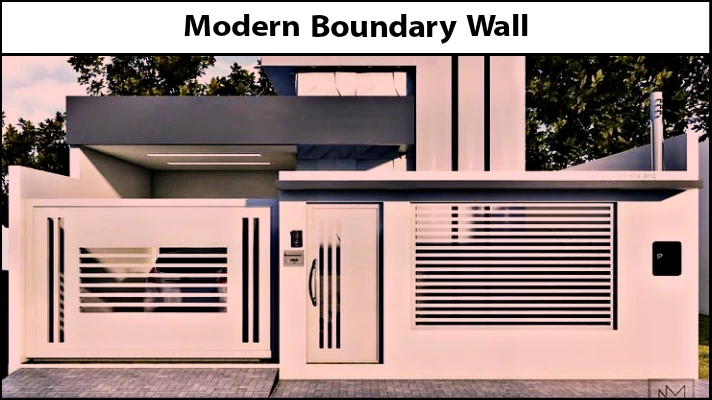
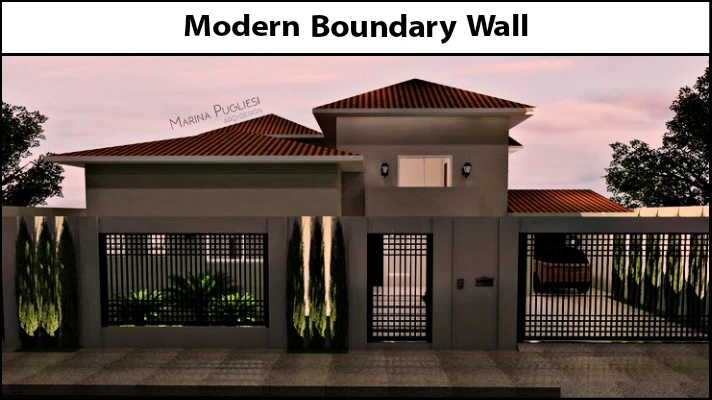


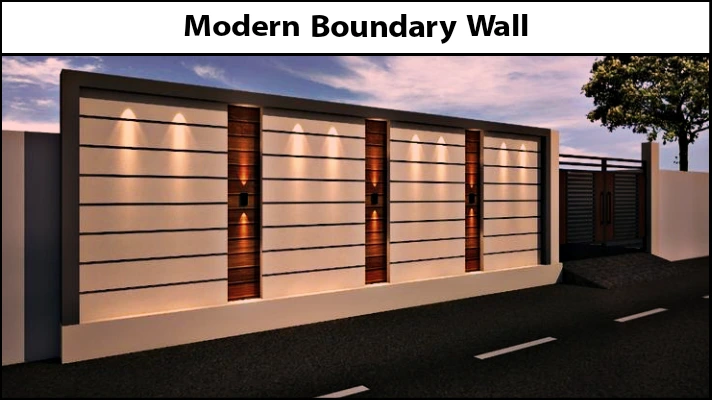

Stone Boundary Wall And Stone Compund Wall Design ideas
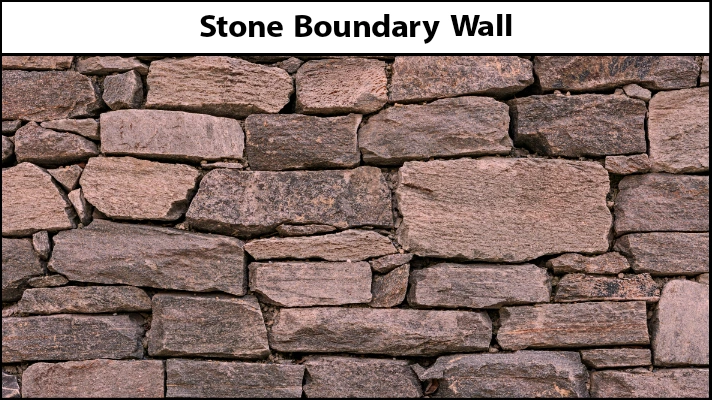
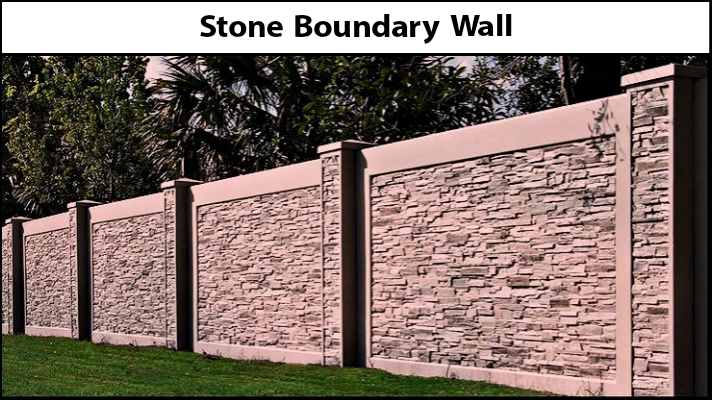
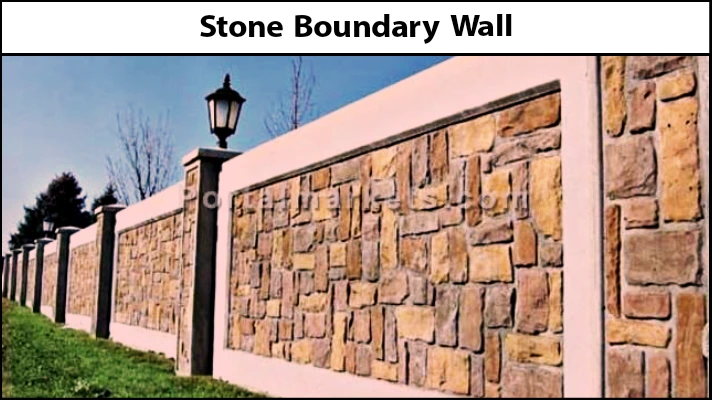
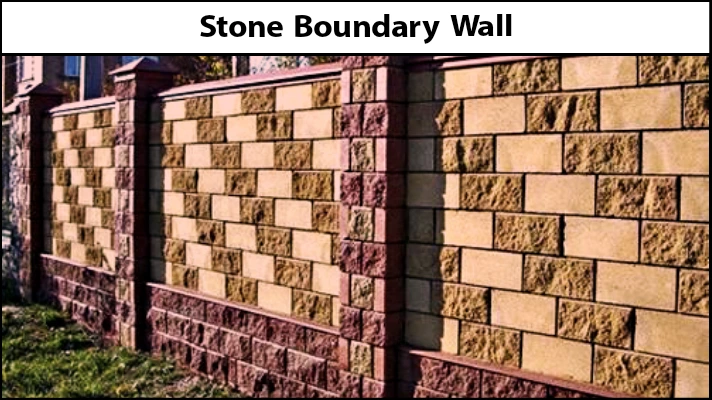
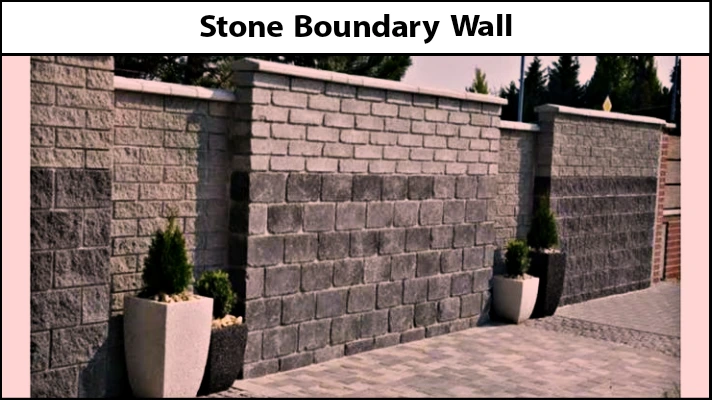
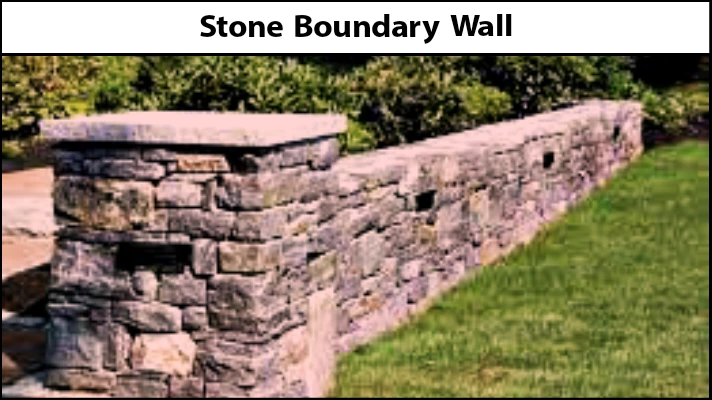
FAQ For Compund Wall Design And Boundary Wall Design
What is the importance of a compound wall in Indian home design?
A compound wall in Indian home design serves multiple purposes. It provides security, privacy, and adds aesthetic value to the property. It also defines the boundary of the property and contributes to the overall architectural appeal.
Can you share some compound wall design photos for homes in India?
Unfortunately, as a text-based AI, I can’t provide images. However, you can easily find compound wall design photos by searching online or on home design websites for inspiration.
Are there any specific patterns for simple compound wall designs in India?
Yes, simple compound wall designs in India often include patterns like brickwork, stone cladding, or decorative elements. These patterns can vary based on regional and personal preferences.
What are the key considerations for designing a compound wall for the front of a home?
Front compound walls should complement the overall architectural style of the home. Consider using materials and design elements that enhance the curb appeal. Gates, pillars, and decorative features can be incorporated to make it visually appealing.
Are there any new models or trends in compound wall design for homes?
Trends in compound wall design may vary, but contemporary designs often focus on combining functionality with aesthetics. Incorporating modern materials, textures, and innovative patterns can give a fresh and stylish look to the compound wall.
How can I design a compound wall that complements the overall design of my home?
Consider consulting with an architect or a professional designer who can assess your home’s design and suggest a compound wall that complements it. Pay attention to materials, colors, and patterns that harmonize with your home’s style.
What factors should I consider for a compound wall design that provides security and privacy?
Height, materials, and the inclusion of features like gates and surveillance systems are crucial for security and privacy. Opt for solid materials and design elements that discourage unauthorized access.

Hello! I’m Vaishnavi, a civil engineer who enjoys sharing how we design and build structures. My blog makes understanding engineering easy and interesting for everyone!

Comments are closed.